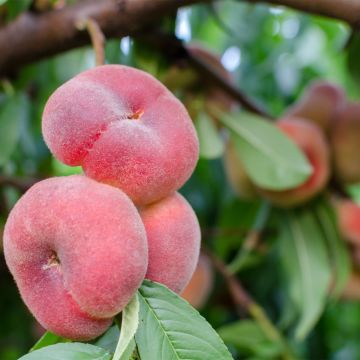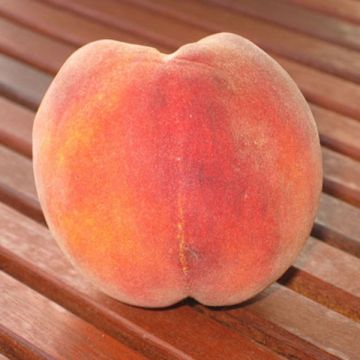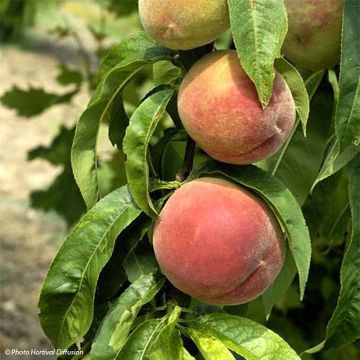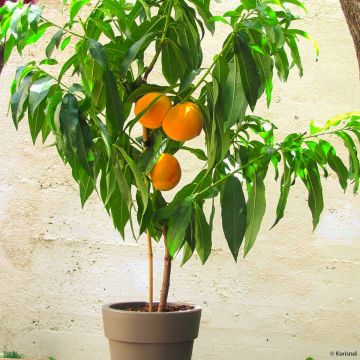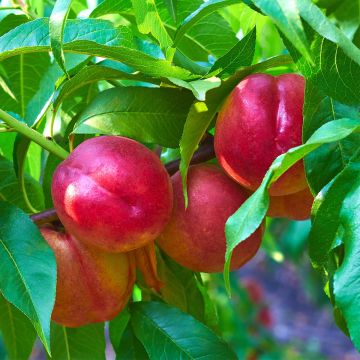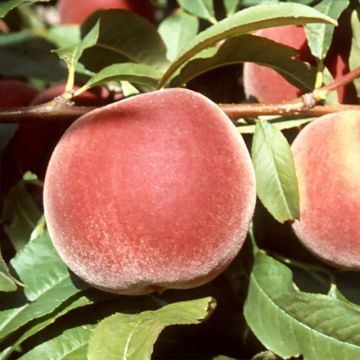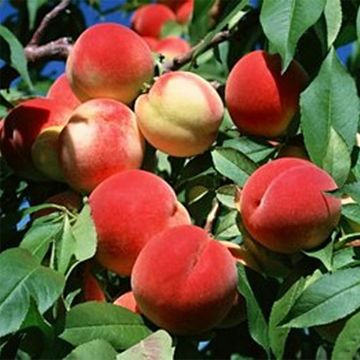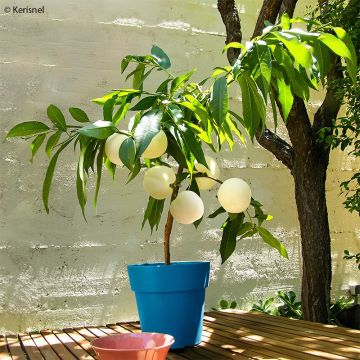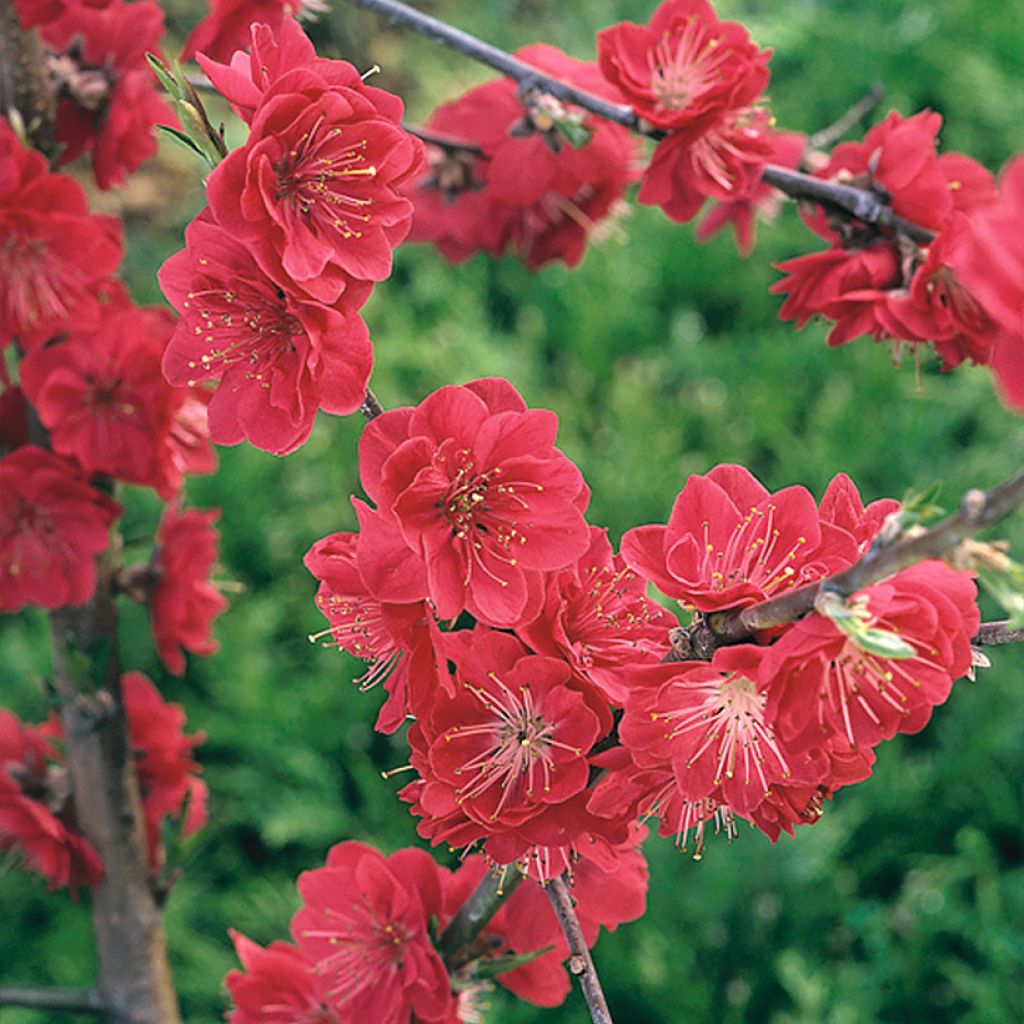

Prunus persica Melred Weeping
Prunus persica Melred Weeping
Prunus persica Melred Weeping
Peach
Special offer!
Receive a €20 voucher for any order over €90 (excluding delivery costs, credit notes, and plastic-free options)!
1- Add your favorite plants to your cart.
2- Once you have reached €90, confirm your order (you can even choose the delivery date!).
3- As soon as your order is shipped, you will receive an email containing your voucher code, valid for 3 months (90 days).
Your voucher is unique and can only be used once, for any order with a minimum value of €20, excluding delivery costs.
Can be combined with other current offers, non-divisible and non-refundable.
Home or relay delivery (depending on size and destination)
Schedule delivery date,
and select date in basket
This plant carries a 24 months recovery warranty
More information
We guarantee the quality of our plants for a full growing cycle, and will replace at our expense any plant that fails to recover under normal climatic and planting conditions.
Would this plant suit my garden?
Set up your Plantfit profile →
Description
Prunus persica 'Melred Weeping' is a variety of flowering peach tree, which focuses on its spring flowering and weeping umbrella-shaped silhouette, it also bears fruit in summer. In April, the trailing branches are covered with large semi-double flowers in a beautiful fuchsia-pink colour, before the leaves emerge. Towards the end of July and beginning of August, this self-fertile variety produces numerous, fairly small fruits with fuzzy yellow-red skin and white, sweet and fruity flesh. To end the season, the green foliage takes on magnificent autumnal shades of fire colours before falling for the winter. With moderate growth, this beautiful variety takes up very little space, making it easy to plant in a small garden or a pot on a balcony. Hardy and very easy to grow, it requires a sunny or partially shaded location, sheltered from cold winds. Well-drained, deep, rich soil, without limestone and stagnant moisture, is ideal for its development.
Prunus persica (Peach tree) is a fruit tree belonging to the Rosaceae family, which originated in China in the Sichuan and Guizhou regions around 500 BC. It appeared in Europe in the 6th century and experienced significant development in the 19th century. From then on, numerous selections aimed at improving the fruit's taste qualities took place. The White Vine Peach, as its name indicates, was formerly cultivated in vineyards where white spots on its leaves indicated the arrival of powdery mildew and, during the grape harvest the juicy peaches refreshed the grape pickers.
The 'Melred Weeping' variety is selected for its exceptionally beautiful flowers. It is grafted onto a stem, which, depending on its length, determines the height of the plant. It has a characteristic, somewhat upright habit composed of a vertical trunk topped with a regular and trailing crown. With fairly rapid growth, this small peach tree, depending on the height of the graft point, reaches between 1.50 and 2.50 m in height and 1.60 to 2 m in width at maturity. The branches, with smooth, reddish-brown bark with orange highlights, hang downwards, giving a weeping silhouette to this small tree. The deciduous foliage consists of lanceolate, bright green leaves, 8 to 15 cm long and 3 to 4 cm wide, with crenate and wavy edges, taking on yellow-orange autumnal shades before falling. The leaves have a slight almond scent and emit a sweet fragrance. From early April, dark pink to fuchsia red flowers, 5 to 8 cm in diameter, appear solitarily before the leaves on the previous year's branches. They can be destroyed by frost from -2 to -3°C. It is a remarkably decorative flowering in spring, particularly nectar-rich. It is hardy down to -15°C, although it is susceptible to late spring frosts that damage its flowers and compromise fruiting. Self-fertile variety, not requiring other peach trees nearby for pollination, but the presence of another peach tree will improve fertility.
The harvest of the fruits takes place over the last fifteen days of July, varying depending on the regions and as they ripen. As peaches are very fragile, they are harvested carefully by hand. The fruits are consumed as soon as they are harvested. Peaches are delicious eaten fresh as soon as they are picked. They are ideal for making compotes, ice creams and sorbets, tarts, pastries and fruit salads or as accompaniments to savoury dishes with meats (duck, rabbit, chicken...) or fish (salmon, cod...). They are also perfect for making juices or fruits in syrup. Peaches are rich in water, refreshing and thirst-quenching. Their fleshy texture is very satisfying and they are low in calories, rich in potassium, magnesium, and phosphorus, with a significant iron content. Their content of vitamins C and B, antioxidants, and fibres make peaches a healthy choice. They are invigorating, energising, and rehydrating. The fruits can be stored for a week in a cool place, protected from light.
The Melred Weeping Peach Tree can withstand pruning well, which allows it to be contained in a desired size and generate new, fresher branches carrying new flowers. It adapts to all types of well-drained soils and prefers a sunny location. It can be planted as a standalone tree to fully appreciate its weeping form or in association with other flowering Prunus trees such as: the Cherry Plum (Prunus cerasifera) with pink flowers and red fruits, the Flowering Almond (Prunus triloba) with pompon-like pink flowers, the Dwarf Japanese Flowering Cherry (Prunus incisa Kojo no mai) with pale pink flowers and red autumn foliage... The choice is vast, and each of them can enhance the garden with colourful flowers in spring. Undemanding and easy to grow, it requires almost no care and will reward you with beautiful flowering branches that can be used in bouquets.
Report an error about the product description
Plant habit
Flowering
Foliage
Botanical data
Prunus
persica
Melred Weeping
Rosaceae
Peach
Cultivar or hybrid
Other Peach and Nectarine trees
View all →Planting and care
The 'Melred Weeping' Flowering Peach is preferably planted in autumn or spring in regions with harsh winters, in full sun, sheltered from drafts and cold winds. A southeast or southwest exposure suits it perfectly well. In regions that frequently experience late spring frosts, it will be more difficult, if not impossible, to make a peach tree bear fruit. It requires ordinary soil in slightly acidic to neutral, rich, deep, and well-drained soil. The peach tree dislikes heavy and waterlogged soils, as well as limestone soils.
Dig a hole at least 40 cm deep and 60 cm wide, at least one week before planting. Remove all rocks and weeds. Place the container in a basin to moisten the root ball by capillarity. Throw two handfuls of crushed horn in the bottom of the hole. Mix the extracted soil with well-rotted compost, well-decomposed manure, or potting soil. Fill the hole halfway with the extracted soil. Plant a stake at least 50 cm deep. Place the peach tree in the hole. Fill with the remaining soil. Gently tamp the soil around the peach tree and tie it to the stake. Form a basin and water abundantly.
For container planting: place a layer of gravel or clay balls at the bottom of the pot to facilitate drainage. Add a layer of soil and then place the plant and cover with a mixture of 2/3 garden soil, 1/3 potting soil or well-rotted compost. Every spring, replace the surface layer with fresh potting soil. Water regularly and moderately. At the end of autumn, protect the pot with insulation before winter frosts.
The foliage is susceptible to Peach Leaf Curl, a treatment at leaf fall, and one at bud burst in spring will limit its occurrence.
Planting period
Intended location
Care
This item has not been reviewed yet - be the first to leave a review about it.
Haven't found what you were looking for?
Hardiness is the lowest winter temperature a plant can endure without suffering serious damage or even dying. However, hardiness is affected by location (a sheltered area, such as a patio), protection (winter cover) and soil type (hardiness is improved by well-drained soil).

Photo Sharing Terms & Conditions
In order to encourage gardeners to interact and share their experiences, Promesse de fleurs offers various media enabling content to be uploaded onto its Site - in particular via the ‘Photo sharing’ module.
The User agrees to refrain from:
- Posting any content that is illegal, prejudicial, insulting, racist, inciteful to hatred, revisionist, contrary to public decency, that infringes on privacy or on the privacy rights of third parties, in particular the publicity rights of persons and goods, intellectual property rights, or the right to privacy.
- Submitting content on behalf of a third party;
- Impersonate the identity of a third party and/or publish any personal information about a third party;
In general, the User undertakes to refrain from any unethical behaviour.
All Content (in particular text, comments, files, images, photos, videos, creative works, etc.), which may be subject to property or intellectual property rights, image or other private rights, shall remain the property of the User, subject to the limited rights granted by the terms of the licence granted by Promesse de fleurs as stated below. Users are at liberty to publish or not to publish such Content on the Site, notably via the ‘Photo Sharing’ facility, and accept that this Content shall be made public and freely accessible, notably on the Internet.
Users further acknowledge, undertake to have ,and guarantee that they hold all necessary rights and permissions to publish such material on the Site, in particular with regard to the legislation in force pertaining to any privacy, property, intellectual property, image, or contractual rights, or rights of any other nature. By publishing such Content on the Site, Users acknowledge accepting full liability as publishers of the Content within the meaning of the law, and grant Promesse de fleurs, free of charge, an inclusive, worldwide licence for the said Content for the entire duration of its publication, including all reproduction, representation, up/downloading, displaying, performing, transmission, and storage rights.
Users also grant permission for their name to be linked to the Content and accept that this link may not always be made available.
By engaging in posting material, Users consent to their Content becoming automatically accessible on the Internet, in particular on other sites and/or blogs and/or web pages of the Promesse de fleurs site, including in particular social pages and the Promesse de fleurs catalogue.
Users may secure the removal of entrusted content free of charge by issuing a simple request via our contact form.
The flowering period indicated on our website applies to countries and regions located in USDA zone 8 (France, the United Kingdom, Ireland, the Netherlands, etc.)
It will vary according to where you live:
- In zones 9 to 10 (Italy, Spain, Greece, etc.), flowering will occur about 2 to 4 weeks earlier.
- In zones 6 to 7 (Germany, Poland, Slovenia, and lower mountainous regions), flowering will be delayed by 2 to 3 weeks.
- In zone 5 (Central Europe, Scandinavia), blooming will be delayed by 3 to 5 weeks.
In temperate climates, pruning of spring-flowering shrubs (forsythia, spireas, etc.) should be done just after flowering.
Pruning of summer-flowering shrubs (Indian Lilac, Perovskia, etc.) can be done in winter or spring.
In cold regions as well as with frost-sensitive plants, avoid pruning too early when severe frosts may still occur.
The planting period indicated on our website applies to countries and regions located in USDA zone 8 (France, United Kingdom, Ireland, Netherlands).
It will vary according to where you live:
- In Mediterranean zones (Marseille, Madrid, Milan, etc.), autumn and winter are the best planting periods.
- In continental zones (Strasbourg, Munich, Vienna, etc.), delay planting by 2 to 3 weeks in spring and bring it forward by 2 to 4 weeks in autumn.
- In mountainous regions (the Alps, Pyrenees, Carpathians, etc.), it is best to plant in late spring (May-June) or late summer (August-September).
The harvesting period indicated on our website applies to countries and regions in USDA zone 8 (France, England, Ireland, the Netherlands).
In colder areas (Scandinavia, Poland, Austria...) fruit and vegetable harvests are likely to be delayed by 3-4 weeks.
In warmer areas (Italy, Spain, Greece, etc.), harvesting will probably take place earlier, depending on weather conditions.
The sowing periods indicated on our website apply to countries and regions within USDA Zone 8 (France, UK, Ireland, Netherlands).
In colder areas (Scandinavia, Poland, Austria...), delay any outdoor sowing by 3-4 weeks, or sow under glass.
In warmer climes (Italy, Spain, Greece, etc.), bring outdoor sowing forward by a few weeks.






























